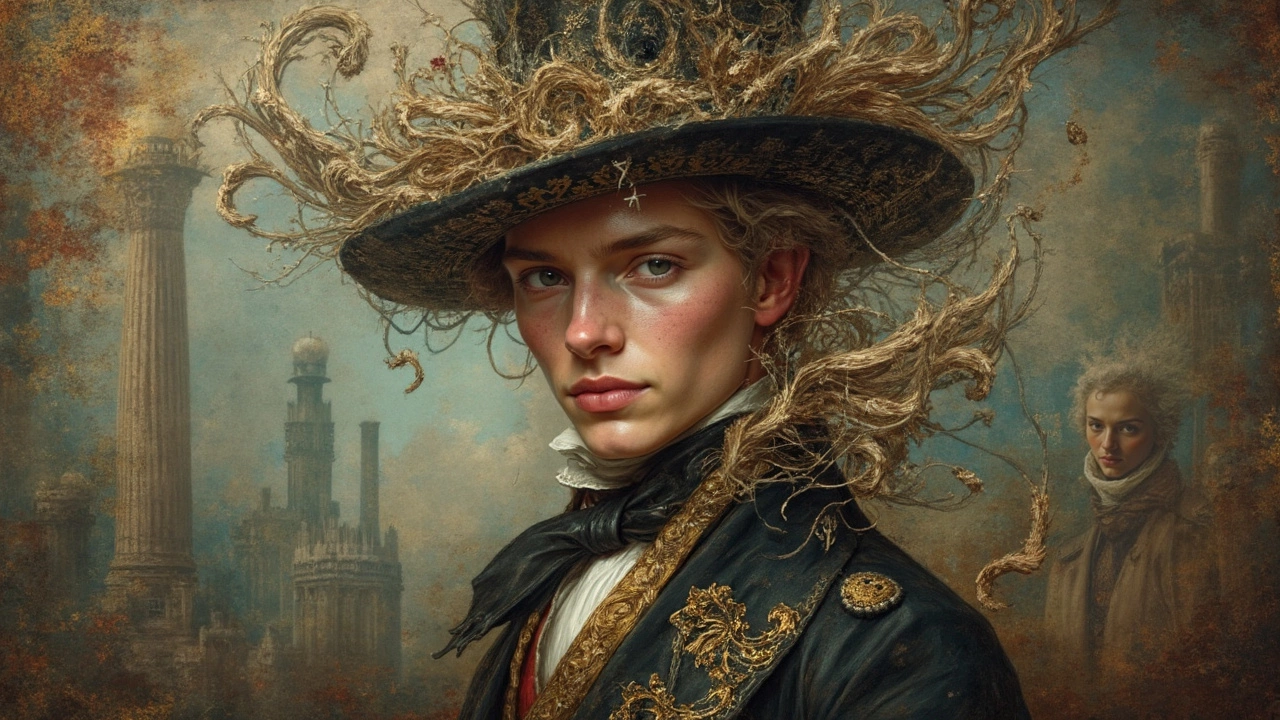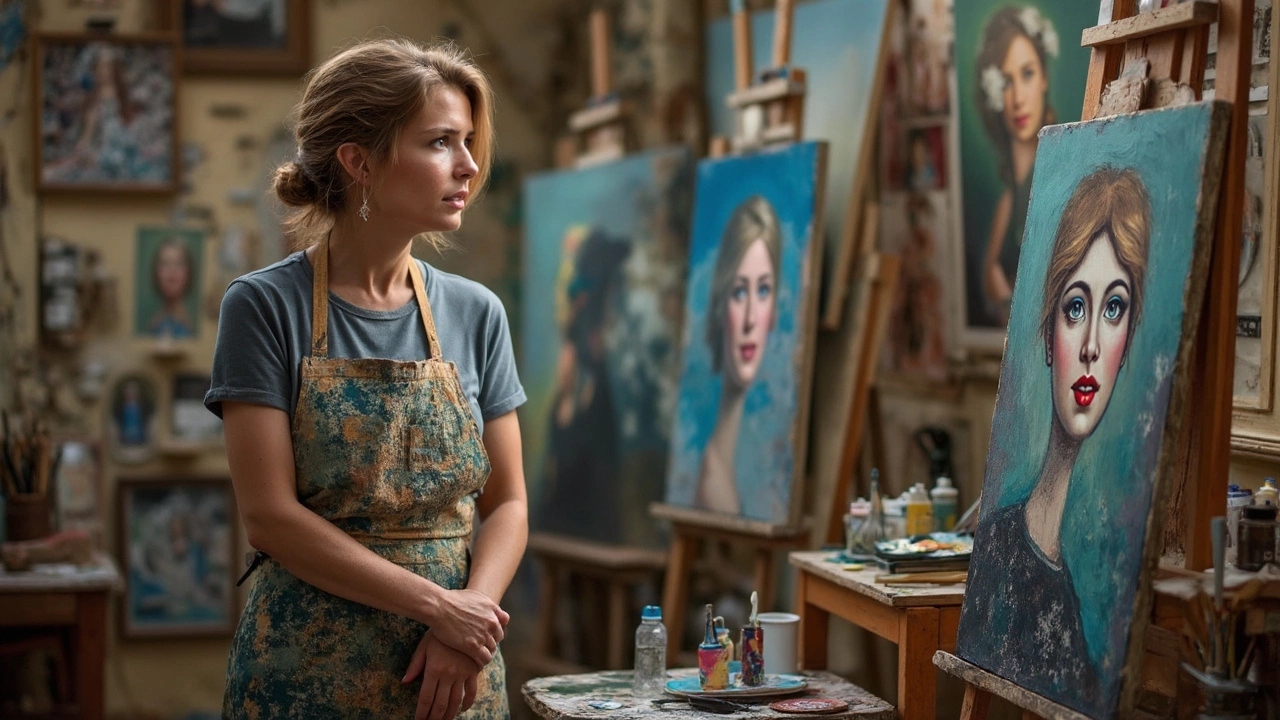When we think of a portrait, the first image that often pops into mind is a realistic depiction of someone's face, a historical tradition stretching back centuries. But, have you ever wondered if portraits really need to be realistic to be considered good art? It's a question that's sparked plenty of debates among artists and art lovers alike.
For ages, the goal of a portrait was to make it as lifelike as possible, capturing not just a person's appearance but their essence. Yet, as we ventured into the 20th century, artists started to push these boundaries, asking the daring question: Can a portrait tell more than just how someone looks?
Jumping forward to today, we see portraits taking on a myriad of forms—from abstract creations to impressionistic styles. This shift challenges the notion of realism in art. So, what does it mean for an artist today? Is sticking to realism necessary, or is there freedom to explore other possibilities? The answers might surprise you. Stick around as we dig into these ideas and uncover ways to express more than just a face on canvas.
- The Tradition of Realism
- Beyond Likeness: Embracing Creativity
- Techniques and Styles to Explore
- The Impact of Non-Realistic Portraits
The Tradition of Realism
Realism in portrait painting has a rich history, deeply rooted in human desire to record and honor likenesses. Artists like Leonardo da Vinci and Rembrandt mastered this approach, setting a high bar for future generations. Their work focused on anatomical accuracy, subtle coloring, and meticulous detail to ensure every feature was as lifelike as possible.
Back in the day, realism wasn't just for show—it was necessary. Before cameras, portraits were the only way to preserve someone's visage for posterity. This need fueled technical advancements, pushing artists to hone their craft and find innovative methods to depict reality precisely.
One fascinating aspect of realism is how artists would often use symbolic elements and environmental details to give deeper insights into their subject's life and character. For example, a carefully placed book could hint at intellectual pursuits, while specific clothing motifs might suggest social status.
The Rise of Photorealism
Moving into the 20th century, a new twist on realism emerged: photorealism. Inspired by photography's accuracy, this style turned the challenge up a notch, encouraging painters to create works so realistic they could almost be mistaken for photographs. It's like realism on steroids and gained quite a following among artists eager to showcase their technical skills.
So, with all this emphasis on making portraits look as real as humanly possible, it's natural to wonder—what's the payoff? Some argue that capturing a subject's personality transcends mere replication. While portraits offer an amazing opportunity to showcase one's technical prowess, does focusing on realism limit creativity? That's something to chew on as we explore other exciting approaches artists can take.
Beyond Likeness: Embracing Creativity
So, you've mastered the art of capturing someone's likeness on canvas. But what's next? How about exploring ways to tell a deeper story? In portraiture, sometimes creativity speaks louder than realism. Adding a creative twist can transform a painting from just a good likeness into something truly thought-provoking.
Portraits have always been a way to capture who a person is beyond their physical look. By integrating abstract elements, unusual colors, or mixed media, artists can convey emotions, experiences, or even the unseen parts of a person's personality.
Seeing Beyond the Surface
Think of portraits like Picasso's—you know the face, but there's so much more to it. He didn't shy away from reshaping faces or playing with perspectives, using artistic expression to convey deeper meaning. This approach reminds us that a portrait can be a window into someone's world, inner thoughts, or even cultural commentary.
Techniques to Try
Feeling adventurous? Try these ideas to push the creative boundaries:
- Abstract elements: Play with shapes and lines to convey emotions or character traits.
- Color theory: Use colors symbolically—for instance, blue for calm or red for passion—and see how they change the story your portrait tells.
- Textures: Incorporate different textures through layering techniques or mixed media to add depth and interest.
If breaking away from the norm feels daunting, remember it doesn't have to be all or nothing. Start small, perhaps by introducing one abstract element or a splash of unexpected color into your portrait painting. It's all about experimenting and finding what speaks to you and your canvas.

Techniques and Styles to Explore
Diving into the world of portrait painting, there are so many techniques and styles beyond the traditional realism. Whether you're new to art or looking to shake things up, exploring these can really elevate your work.
Abstract Portraits
Abstract art can be a blast. With abstract portraits, it's not about capturing every detail perfectly; it's about expressing emotion using colors, shapes, and lines. Think about letting go of rules and letting creativity flow. For example, the famous artist Pablo Picasso played with perspective and shape, creating faces that are more about feeling than reality.
Impressionism
Want something that's loose yet impactful? Impressionism might be your jam. Instead of focusing on precise details, this style captures the essence of the subject. Impressionist portraits often use short, visible brush strokes and emphasize lighting.
Mixed Media
Mixed media is another avenue that's really opened up in modern times. Combine paint with pencils, collage, or even digital tools. The sky's the limit. This style lets you experiment and create unique textures and layers.
Digital Portraiture
With technology advancing, digital art is now a go-to for many. Digital tools offer a wide range of brushes and effects that traditional mediums can't easily replicate. If you love tech and art, this could be a fulfilling path.
These are just a few ways to break away from strict realism and explore your own creative potential. Whether it's through realism or bending the rules with creativity, there's no limit except the ones you set for yourself. So grab your tools of choice and get started on your next masterpiece!
The Impact of Non-Realistic Portraits
Non-realistic portrait painting is a game-changer in the art world. By stepping away from traditional realism, artists open up new possibilities for storytelling and emotional expression. In this section, we'll explore how these kinds of portraits leave a unique imprint on both the artist and the viewer.
The Power of Emotion
When portraits aren’t confined by the need to replicate physical features with precision, they often capture something deeper—emotion. Artists can use exaggerated colors, distorted forms, or symbolic elements to express the subject's inner world. This approach allows viewers to connect on a more personal level, often evoking stronger reactions.
Breaking Conventional Norms
By veering away from realism, artists disrupt traditional expectations and invite viewers to see the concept of identity differently. This shift encourages discussion and exploration of themes like identity, perception, and reality through the lens of artistic expression.
What's fascinating is how audiences have embraced these non-realistic depictions. With the rise of social media and digital platforms, artworks that challenge the norms are often favored for their originality. This popularity shows that there's a move towards valuing creativity as much as or even more than accuracy.
For artists, it's a freedom to explore and find their unique voice. Rather than just mastering the skill of seeing, they learn to communicate complex ideas through their work. And for viewers, it’s a fresh perspective, a reminder that beauty isn’t tied solely to realism.

